
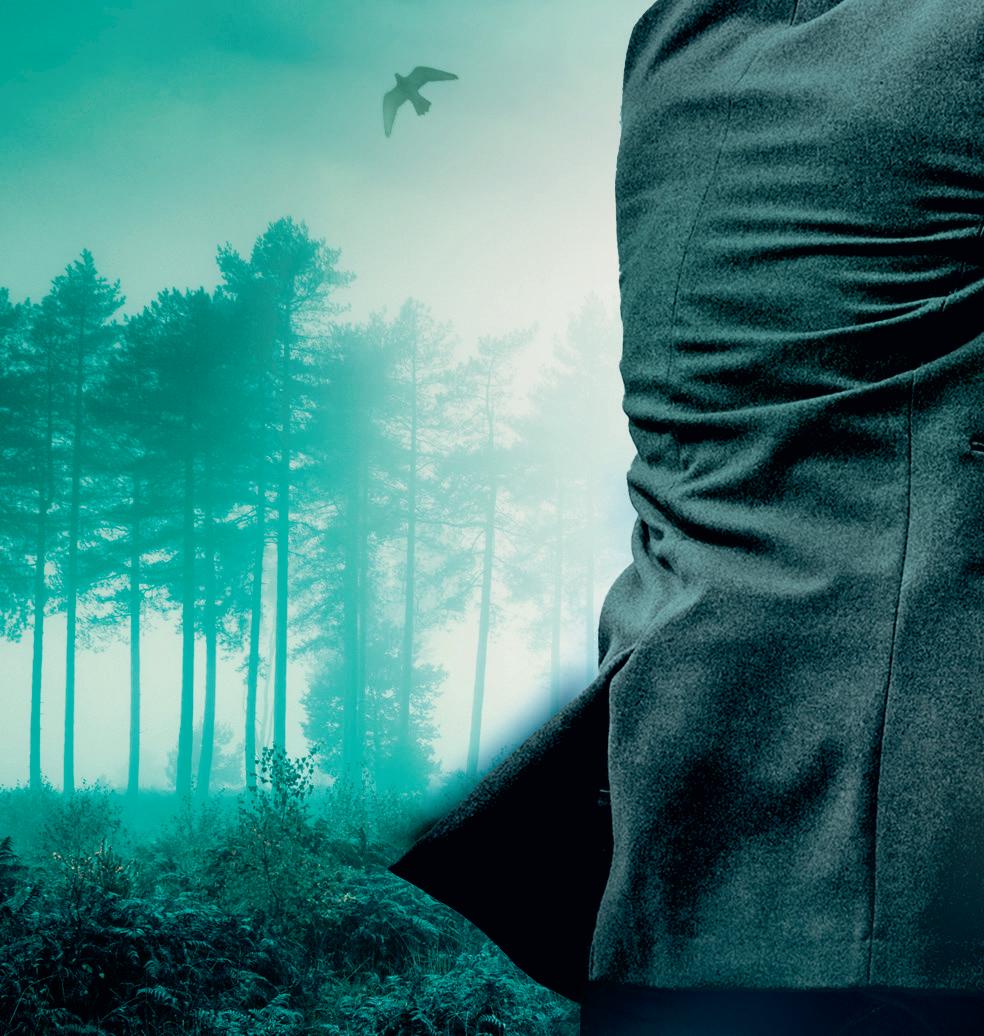

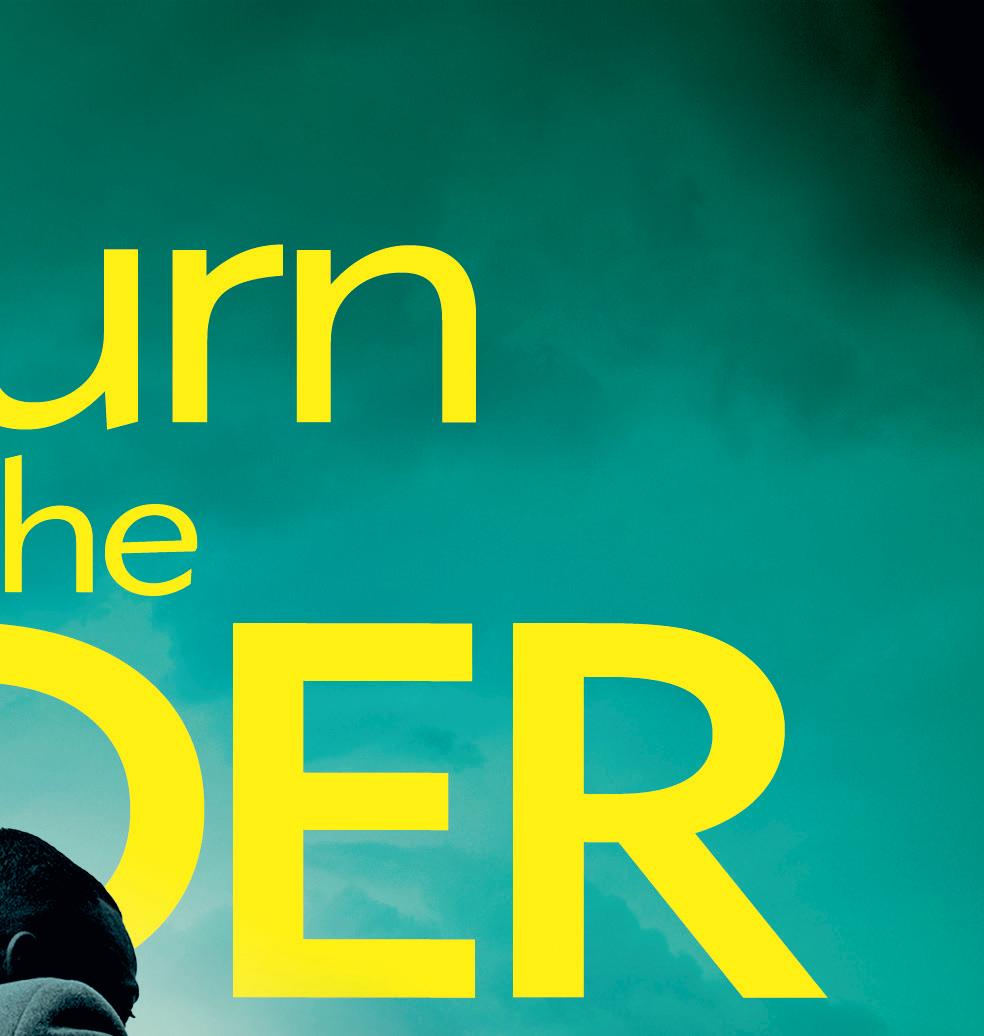
THRILLER
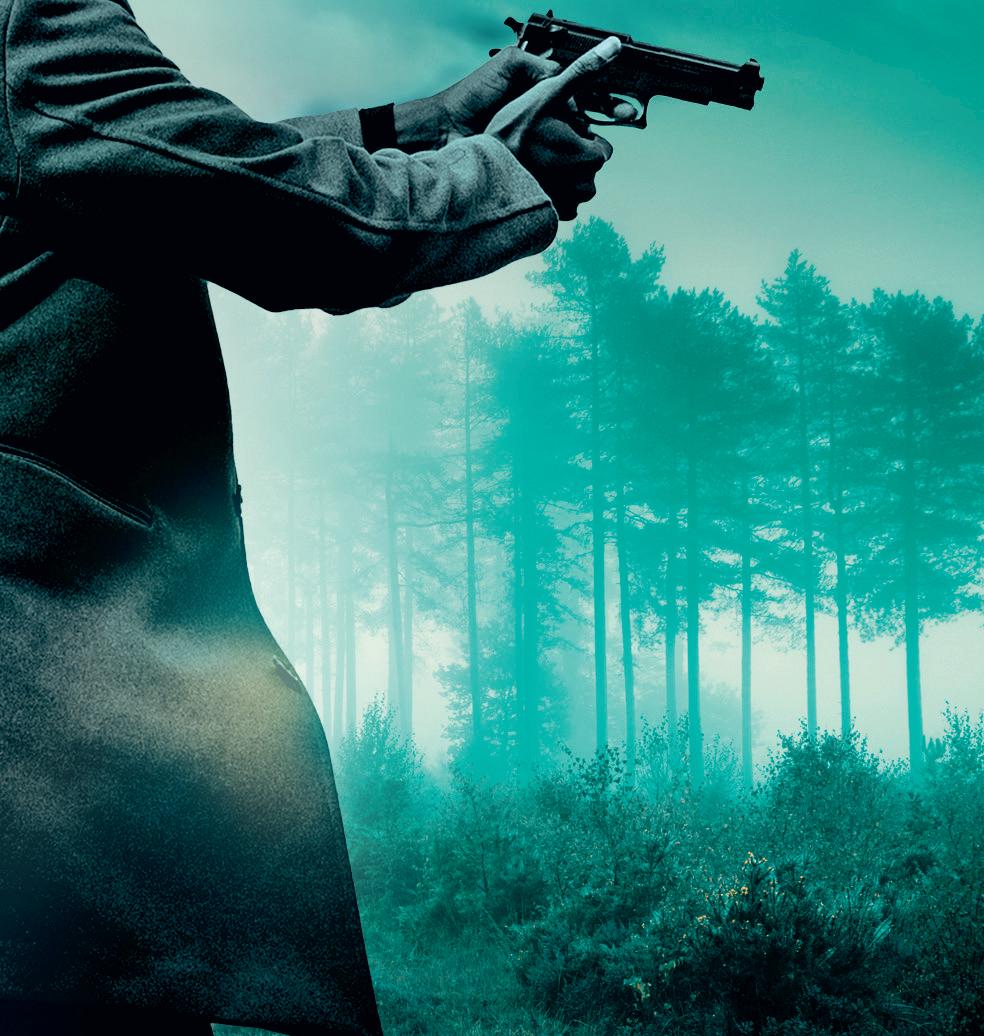

















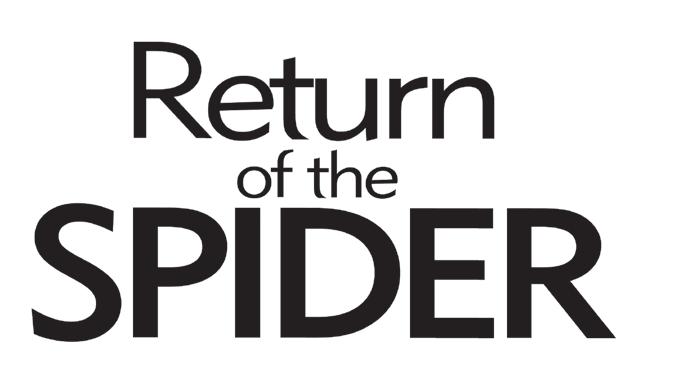
‘It’s no mystery why James Patterson is the world’s most popular thriller writer. Simply put: nobody does it better.’
‘No one gets this big without amazing natural storytelling talent – which is what Jim has, in spades. The Alex Cross series proves it.’
‘James Patterson is the gold standard by which all others are judged.’
‘Alex Cross is one of the best-written heroes in American fiction.’
‘Twenty years after the first Alex Cross story, he has become one of the greatest fictional detectives of all time, a character for the ages.’
‘Alex Cross is a legend.’
‘Patterson boils a scene down to the single, telling detail, the element that defines a character or moves a plot along. It’s what fires off the movie projector in the reader’s mind.’
‘James Patterson is The Boss. End of.’
Physical description:
Physical description:
Alex Cross is 6 foot 3 inches (190cm), and weighs 196 lbs (89 kg).
He is African American, with an athletic build.
Family history:
Family history: ========








Alex Cross is 6 foot 3 inches (190cm), and weighs 196 lbs (89 kg). He is African American, with an athletic build.







Cross was raised by his grandmother, Regina Cross Hope - known as Nana Mama - following the death of his mother and his father's subsequent descent into alcoholism. He moved to D.C. from Winston-Salem, North Carolina, to live with Nana Mama when he was ten.
Cross was raised by his grandmother, Regina Cross Hope - known as Nana Mama - following the death of his mother and his father's subsequent descent into alcoholism. He moved to D.C. from Winston-Salem, North Carolina, to live with Nana Mama when he was ten.
Relationship history:
Relationship history: ====================
Cross was previously married to Maria, mother to his children Damon and Janelle, however she was tragically killed in a drive-by shooting. Cross has another son, Alex Jr., with Christine Johnson.
Cross was previously married to Maria, mother to his children Damon and Janelle, however she was tragically killed in a drive-by shooting. Cross has another son, Alex Jr., with Christine Johnson. He is now married to Detective Brianna (Bree) Stone, who was recently appointed Chief of Detectives for the Metro Police Department.
Education:
Education:
=========




Cross has a PhD in psychology from Johns Hopkins University in Baltimore, Maryland, with a special concentration in the field of abnormal psychology and forensic psychology.
Cross has a PhD in psychology from Johns Hopkins University in Baltimore, Maryland, with a special concentration in the field of abnormal psychology and forensic psychology.
Employment:
Employment:

Cross works as a psychologist in a private practice, based in his home. He also consults for the Major Case Squad of the Metro Police Department, where he previously worked as a psychologist for the Homicide and Major Crimes team.
Cross works as a psychologist in a private practice, based in his home. He also consults for the Major Case Squad of the Metro Police Department, where he previously worked as a psychologist for the Homicide and Major Crimes team.
A loving father, Cross is never happier than when spending time with his family. He is also a dedicated member of his community and often volunteers at his local parish and soup kitchen. When not working in the practice or consulting for MPD, he enjoys playing classical music on the piano, reading, and teaching his children how to box.
A loving father, Cross is never happier than when spending time with his family. He is also a dedicated member of his community and often volunteers at his local parish and soup kitchen. When not working in the practice or consulting for MPD, he enjoys playing classical music on the piano, reading, and teaching his children how to box.


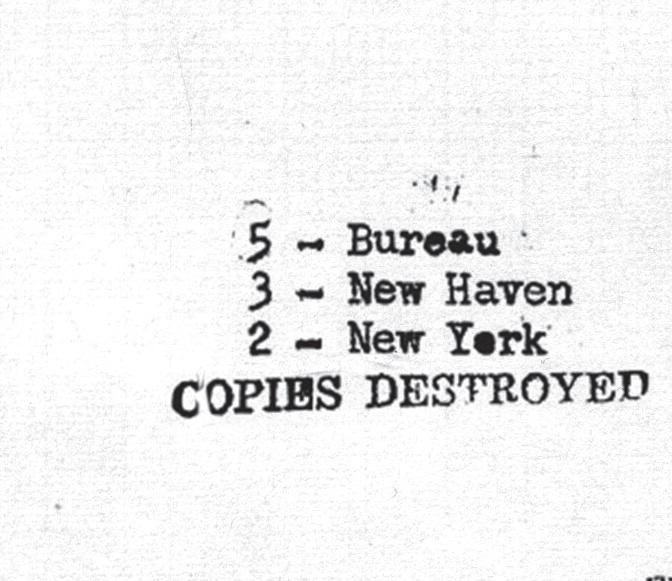













Rock Creek

George Washington University Hospital
The White House

Washington Monument


Lincoln Memorial





West Potomac Park
Martin Luther King, Jr. Memorial
Tidal Basin

Franklin Delano Roosevelt Memorial















Thomas Jefferson Memorial












East Potomac Park


































































































A list of titles by James Patterson appears at the back of this book


UK | USA | Canada | Ireland | Australia India | New Zealand | South Africa
Century is part of the Penguin Random House group of companies whose addresses can be found at global.penguinrandomhouse.com
Penguin Random House UK, One Embassy Gardens, 8 Viaduct Gardens, London SW11 7BW
penguin.co.uk global.penguinrandomhouse.com
First published 2025 001
Copyright © James Patterson, 2025
The moral right of the author has been asserted
Penguin Random House values and supports copyright. Copyright fuels creativity, encourages diverse voices, promotes freedom of expression and supports a vibrant culture. Thank you for purchasing an authorised edition of this book and for respecting intellectual property laws by not reproducing, scanning or distributing any part of it by any means without permission. You are supporting authors and enabling Penguin Random House to continue to publish books for everyone. No part of this book may be used or reproduced in any manner for the purpose of training artificial intelligence technologies or systems. In accordance with Article 4(3) of the DSM Directive 2019/790, Penguin Random House expressly reserves this work from the text and data mining exception.
Printed and bound in Great Britain by Clays Ltd, Elcograf S.p.A.
The authorised representative in the EEA is Penguin Random House Ireland, Morrison Chambers, 32 Nassau Street, Dublin D02 YH68
A CIP catalogue record for this book is available from the British Library
ISBN: 978–1–529–92217–2 (hardback)
ISBN: 978–1–529–92218–9 (trade paperback)
Penguin Random House is committed to a sustainable future for our business, our readers and our planet. This book is made from Forest Stewardship Council® certified paper.

1MY NAME IS ALEX CROSS.
I have been a criminal psychologist for the FBI’s Behavioral Science Unit and am currently working — for the second time in my life — as a homicide detective with the Washington, DC, Metropolitan Police.
In my decades of investigative and profi ling work, I’ve had to interview many people with vicious and violent minds. The worst of them, the psychopaths and sociopaths, the ones who loved to kill — they all had one thing in common: They lied beautifully. So beautifully that I was always left wondering how much of what they told me was truth and how much was spun out of thin air the way a spider crafts a web on a dewy morning.
One sweltering day in May, all that changed. One sweltering day in May, someone put a sledgehammer through rotten
drywall and showed me where one of the fi rst spiders I ever encountered had built his secret nest.
There’d been a thunderstorm earlier that afternoon, and despite the lingering heat, an evening breeze had picked up enough to cool the sunporch at our home on Fifth Street in Southeast Washington, DC, where I was trying to play Gershwin after dinner. Caught up in case after case, I had not sat down at the keys for well over a year. The piano was perpetually a bit out of tune, and I was rusty, but I tried to coax the melody of An American in Paris out of it.
Gershwin probably wouldn’t have appreciated my rendition, but I didn’t care. I was sitting at the instrument after a long hiatus, and all thoughts of my hectic life slipped away until there was nothing but the music for almost twenty blissful minutes.
At a quarter past eight, my cell phone blared with the ringtone I reserved for John Sampson, my oldest friend.
“You home?” he asked.
“At the piano on the sunporch. Training to be a lounge lizard.”
“Break training — I’m on my way to your place, ETA in three minutes. The Alphonso brothers have surfaced.”
“Where?” I said, getting up from the piano bench. I opened the sliding glass door and went into the kitchen.
“Right in District Heights, their mom’s old house,” Sampson said. I rushed through the darkened kitchen, hearing the television in the front room.
“You mean their aunt’s place?”
“Right. She inherited it. SWAT has already been alerted and will meet us there.”
“I’ll be out front.” I hung up and went into the front room.
Nana Mama, my ninety-something grandmother, was on the
couch watching Yellowstone with my wife, Bree; she saw me rush in and hit pause on John Dutton riding a horse toward an impossible Montana sunset.
“Gotta go,” I said. “The Alphonso brothers just surfaced.”
“The meth-head bank robbers?” Nana Mama said.
“The same.” I went to the hall closet and retrieved my chest armor and service weapon, a Glock 19.
Bree came out into the hall, clearly worried. “Those guys shoot fi rst and ask questions later, Alex.”
“Which is why there’s an entire SWAT team on its way to surround them,” I said. “John and I are merely witnesses at this point.”
“Stay that way,” Bree said. She kissed me, and I went out to the sidewalk in front of our home.
Sampson pulled up in an unmarked squad car thirty seconds later. I got in and we sped away. John explained that an informant for the regional drug task force had seen Nicky and Trevor Alphonso — armed robbers of twelve banks and killers of six innocent people in the span of four months — shortly after sundown, heading toward their childhood home on Foster Street in District Heights.
“Their aunt there?”
“The informant says she’s out of town, visiting her brother in Chicago.”
“Good,” I said. “Let’s end this. Get these guys behind bars so bank tellers in four states can sleep easier.”
Sampson put a bubble on the roof, lit it up, and hit the siren.
2SAMPSON SHUT DOWN THE siren and the bubble a good four blocks back from the small brick house with double dormers and a bare-grass lawn where the Alphonso brothers had grown up.
We reached the perimeter and parked behind the SWAT van, the rear of which was open. A Black female officer with a headset sat in the back talking to someone as we got out.
“Good, it’s Knight,” Sampson said.
“The best of the bunch,” I said.
Captain Nyla Knight saw us come to the rear of the van, nodded, and pulled her headset to one side. “We have four snipers in position. The breach team is on its way. You can watch it all here.”
We climbed into the van and saw a small bank of screens showing feeds from various members of the SWAT team. “How many total SWAT on scene?” I asked.
“Twelve,” she said. “Taking no chances with these two.”
The plan was for the eight-man breaching team to get flashbang grenades into the little house from the sides and then use the battering rams on the front and rear doors. We watched the team break into two groups of four. One man from each sub team darted across the lawn to the scraggly bushes below the side windows, where lights glowed behind drawn shades.
“Someone’s home,” I said.
“Four someones,” Knight said. “We ran infrared and —”
The shade on the east side of the house flew up. The window sash was already raised. The muzzle of an automatic weapon stuck out and someone fi red, hitting the officer running in to deliver the flash-bang. He fell.
A second gunman opened fi re from a window on the opposite side of the house, but the targeted officer managed to take cover.
“Officer down!” Captain Knight bellowed into her headset.
The breach team’s commander came back over the radio: “Affirmative, Belmont down! Belmont down!”
A sniper positioned on the roof of a house a block away said over the comms, “Got Trevor, Cap. Permission to fi re?”
“Take him,” Knight said.
It was hard to see from our angle, but the sniper shot through the open window and hit Trevor Alphonso in the chest, killing him instantly. Members of the breach team raced forward to retrieve the fallen Officer Belmont.
“Once he’s clear, put a flash-bang in that open window!” Knight said.
“Roger that, Cap.”
The shooting paused. The SWAT captain changed frequencies and called to a support helicopter circling overhead, “Give me infrared on that house.”
“Two in the west front room. Another moving to the rear exit.”
She switched back to SWAT comms and called her snipers. “Aubrey, watch that back door now.”
“On it, Cap,” Officer Aubrey said a second before the rear door of the house flew open and Nicky Alphonso surged out, gun up, spraying bullets in an arc and screaming in rage, “This is my house! Welcome to my house!”
Knight said, “Take him, Aubrey.”
Amid the bursts of rapid fi re from the younger Alphonso brother, I didn’t hear the single shot exit Officer Aubrey’s rifle, but I saw Nicky crumple, shot through the throat. Lights out.
Frantic radio traffic ensued as the breaching teams readied to attack the house again. The front door opened. Two terrified, sobbing young women stepped out with their arms held high.
Captain Knight breathed a sigh of relief, then looked at us. “That could have gone a whole lot better.”
I said, “Not like you had a lot of choice. They went all Scarface on you.”
Sampson nodded, said, “Look at it this way, Captain. You cleaned the streets of some serious bad guys, and you just saved the government’s justice system a whole lot of time and money.”
I GOT HOME AROUND two a.m. My phone started ringing less than five hours later, at six forty.
“Cross,” I grumbled.
“It’s Kane,” the caller said. “I just got off the phone with New Jersey state police captain Alexander Barthalis.”
“I know Alexander,” I said to my chief of detectives. I got out of bed and padded into the bathroom so as not to wake Bree.
Chief Kane said, “Which is why Captain Barthalis wants you and Sampson to meet him in Batsto, New Jersey, ASAP. Got a pen?”
I shut the bathroom door. “Not handy. Text it to me. Can you tell me what —”
The line went dead. Kane had hung up on me in mid-sentence, as he often did.
As I showered and shaved, I tried not to stew over Kane’s rudeness. After I’d dressed and snuck out of my bedroom, Bree still snoozing, I saw that he’d texted me and Sampson an unfamiliar address in the Pine Barrens.
John called a minute later. “I don’t recognize it. You?”
“Never even heard of Batsto. But Alexander Barthalis requested us personally.”
Over the years, we had collaborated with Barthalis several times, including on an investigation into a serial rapist who worked the I-95 corridor between Newark and DC.
“Oh. I like Alexander. Good cop. I’ll pick you up in twenty.”
Ali, my youngest child, was already up and eating granola and bananas at the kitchen island, scrolling on his iPad while Nana Mama sat at the table drinking coffee and reading the newspaper in her nightgown and robe, her sparse gray hair looking like silk lace above her ageless face.
“Eggs?” she asked when she saw me.
“Toast and coffee will be fi ne,” I said. “John and I have to drive to the Pine Barrens in New Jersey.”
“Egg sandwiches for the both of you, then,” Nana Mama said, getting to her feet and starting toward the stove.
“How was Hamilton ?” I asked Ali. He’d seen the play on a school trip.
He beamed at me. “Greater than great! I’d go again tomorrow.”
“I would too, actually,” I said, pouring myself coffee from the pot.
Ali said, “Did you see the Alphonso brothers getting shot, Dad? It’s on the Washington Post website.”
“It was hard to see,” I said. “But we were there. Given their history and their actions last night, they gave the SWAT team no choice.”
“World’s better off without brothers like that,” Nana Mama said, frying eggs.
“I’d rather have seen them brought to trial.”
She said nothing in reply as she made two egg sandwiches on sourdough bread, with jack cheese and her special mustard.
I heard a honk out front, so I kissed Ali and Nana Mama goodbye, grabbed the sandwiches, and hurried outside.
When I got in the car and handed Sampson his breakfast, he smiled and moaned. “Did she put the special mustard in there?”
“Twice as much as usual, just the way you like it.”
Three hours later, after devouring breakfast and stopping twice for coffee, we were in a desolate area of New Jersey on a two-lane highway flanked by dense pines. We didn’t need the exact address in the end.
North of Batsto, we saw FBI vehicles, coroner’s office vans, and New Jersey state police patrol cars parked on both sides of a rutted gravel driveway that snaked uphill and into the pines. We got out of the car and walked over to two young FBI agents standing at the end of the driveway.
“Captain Barthalis called us in,” I said, showing them my credentials. “Who’s in charge?”
“Agent Mahoney,” one of them said. “He just arrived on scene.”
Ned Mahoney’s presence meant this was a very high-profi le case. It helped that he’d been my partner back when we both worked in the FBI’s Behavioral Science Unit.
“This way?” Sampson asked, gesturing up the driveway.
“Yeah, they’re up there.”
We climbed the steep driveway in the oppressive heat. I could hear dogs barking in the woods as we broke into a clearing and saw a cabin with a small porch and a shed, both of which looked like they were about to rot away and collapse at any minute.
Moss grew on the roof. The shake shingles had not been stained in years. Most were curling upward, and many were missing. Paint hung in spirals from the eaves.
Ned Mahoney, a short, lean man with gray-flecked sandy hair, stood near the cabin talking to Alexander Barthalis.
Mahoney nodded at us. “I was going to call you two, but Alexander beat me to it.”
Barthalis, a burly, florid-faced guy wearing gray suit pants but no jacket, a shoulder holster with a weapon, and dark Terminator sunglasses, said, “Well, who else would I call? Been a long time.”
“Five years?” I said, reaching out to shake Barthalis’s hand. “Good to see you, Captain.”
Barthalis pumped my hand. “Always Alexander to you and Detective Sampson, Dr. Cross.”
“It’s Alex, Alexander,” I said.
“And John,” Sampson said, shaking Alexander’s hand. “So, bring us up to speed. What’s going on?”
Barthalis turned all business. “Four bodies have been found by the cadaver dogs, all of them in the woods right around here. There are probably more.”
Mahoney said, “But we think you’re going to be more interested in what was found behind a false wall in the cabin’s basement. That’s what got us to bring in the dogs and the FBI.”
He and Mahoney started toward the sagging front porch; Sampson and I followed. “Who’s the owner?” I asked.
“Guy named Adam Brenner. He bought it last month when the county auctioned off the property because the owner of record — a Delaware company called MKM Holdings — was decades behind on taxes and unreachable, having gone out of business years ago,” Barthalis said. “We know this because Mr.
Brenner had a title search done on the property before making his bid. Here’s where it gets interesting.”
He stopped on the porch. “MKM’s address was a post office box in Camden, and a long- dead lawyer was listed as treasurer. The president was given as M. K. Murphy, and his address was a different post office box in Camden.”
I frowned. “Okay?”
“Who sold M. K. Murphy the property?” Sampson asked. Barthalis pointed at Sampson. “Smart man. The property was sold to MKM by one Gary Murphy shortly after he inherited it from his uncle.”
GARY MURPHY. MY FIRST spider, now long dead. As was Gary Soneji. Both had inhabited the same body — one mind split by dissociative identity disorder.
Murphy’s Soneji side was obsessed with fame, serial killing — and kidnapping the children of the rich and powerful.
Sampson and I caught him and sent him to prison — but things didn’t end there. Soneji had been abused repeatedly as a child, traumatic events that damaged his psyche. In prison, he contracted HIV and developed AIDS. Finding out he was terminally ill sent him into a violent rage; he escaped and went on a killing spree that began with a mass murder in a DC Metro station.
I caught up to him in New York City and chased him into a Grand Central Station train tunnel. During a shoot- out, he fell,
and the makeshift bomb in his jacket detonated, engulfi ng him in flames.
Only then was he fi nally stopped.
But that was years ago, long before Alexander Barthalis called us to the moldering cabin in the Pine Barrens near Batsto.
“You seen inside yet, Ned?” I asked.
The FBI agent shook his head. We followed Barthalis into the cabin, now gutted to the studs.
As we went through the kitchen to the basement stairs, Sampson asked, “Alexander, what alerted you?”
Climbing down the rickety stairs, Barthalis said, “There’s a secret room down here, and a notebook with Gary Soneji’s name on it. The second I realized this was all his doing, I backed out and called your boss and Mahoney’s. I brought in the dogs as a precaution, and they almost immediately struck on the east side. It’s him.”
I reserved judgment.
As on the floor above, much of the old drywall had been torn out, leaving just the studs on three walls. The fourth wall had a ragged gaping hole in it from the floor to the ceiling.
Barthalis reached over and pulled a string. A light bulb went on, revealing a six-foot-by-four-foot space with plain pine shelves on three interior sides and a small stool in the corner.
Mahoney gestured to the hole. “You knew more about him than anyone, Alex.”
I put on surgical gloves and stepped inside the hole with my phone out and the camera on, recording what I was seeing.
There were multiple dusty weapons on the shelves to the left. An Ithaca pump-action twelve-gauge shotgun, a .308 hunting rifle, and several pistols of different calibers, including a Charter Arms .44-caliber snub-nosed, blue-barreled revolver. A sliver of
white athletic tape on the rosewood grip had the letters SOS on it in black ink.
Beside it on the shelf was a .22-caliber semiautomatic handgun, also with white athletic tape on the grip. The letters inked there were NS.
A nine-millimeter Beretta beside that was marked ZK.
A .45 Remington Model 1911 was labeled GRK.
There were several knives on the shelf below the guns, including a black stiletto switchblade also marked NS. Beside it was a length of white nylon rope tagged TBS. On the bottom shelf lay handcuff s and a coiled length of steel wire, both marked JWG.
I took in the shelves on the back wall, which held Polaroid snapshots of various men and women (some clearly dead, some alive), a necklace, several rings, and at least a dozen locks of hair tied with ribbons of various colors.
Gesturing at them, I said, “Trophies. We’ll need DNA analysis on all of it.”
Mahoney said, “I have crime techs from Quantico on their way as we speak.”
“Good,” I said. “If these came from long-missing people, we might be able to give their families some kind of closure.”
The shelves on the wall to the right of the entrance were wider, and the lower ones held six large clear-plastic lidded storage bins. Left to right in black ink, they were labeled NS, SOS, ZK, TBS, JWG, and GRK .
On the shelf immediately above the boxes were notebooks of different colors, each with initials matching those on one of the bins below. I reached for a black leather-bound notebook on the highest shelf.
There was a plastic sleeve dead center on the cover. A fi le card had been put in it.
“ ‘Profiles in Homicidal Genius, by Gary Soneji,’ ” I read aloud from the scrawl on the card. “It has his twisted humor.”
I heard a female voice call, “Mr. Mahoney? Captain Barthalis? The dogs are hitting north of the house now. It might be another grave.”
“Jesus,” Ned said. “Alex, can I leave you to this?”
“Sure,” I said, opening the notebook.
Sampson said, “Too small in that hole for me to help. I’ll give Barthalis and Mahoney a hand outside.”
The three of them left. I looked down at the fi rst page of the notebook, covered in Soneji’s distinctive scrawl, and read.
Time and again, history says, “Do not reinvent the wheel. Study what works, or worked. Study who works, or worked.”
Art students study the masters. Young athletes study the skills of geniuses older than themselves. So do singers and musicians.
In essence, one art or another, one skill or another, it’s all the same.
Don’t reinvent the wheel. Study the masters.
And so I shall study the masters of murder, the geniuses of homicide.
I lifted my head from the page and gazed at the initials on the bins. Standing in Soneji’s secret room holding his murder diary in my hands, I wanted to puke and cry at the same time because my gut was telling me that the bins on the shelves held murder kits, very specific murder kits, and my brain was telling me that a long time ago, Sampson and I might have made a terrible mistake.
In my mind, I saw a big man in prison proclaiming his innocence to me and Sampson before he died.
Deep in the pit of my stomach, doubt and fear grew, as did the
strange sense that I was being haunted by a ghost from my longago past.
I sat there, frozen by that idea, not wanting to push on in Soneji’s notebook but knowing I had to. With shaking fi ngers, I turned the page and fell back in time.
Alexandria, Virginia
GARY SONEJI PULLED HIS black 1985 Saab into the faculty lot of the Charles School, a private college-prep academy.
Before getting out, he paused to assess himself in the rearview mirror.
The balding dark brown wig flawlessly covered his naturally curly blond hair, which he’d cut short. His mustache was darkened with brown wax and shaped into a droop that swallowed his upper lip. Green-colored contacts, English-schoolboy glasses, and facial prosthetics he’d bought from a movie makeup artist completed a disguise that made him look at least ten years older.
Soneji smiled. His own dear wife, Missy, would not have recognized him.
His real name was Gary Murphy. But he had taken on a new identity — Gary Soneji — who so far lived only in his mind. He stepped out of the Saab, opened the back door, and
retrieved a faded blue blazer. He put it on over his blue buttondown dress shirt and adjusted the knot of his blue and red rep tie to make himself look even more disheveled.
He slung his canvas messenger bag over one shoulder and checked his watch. Seven forty. Classes did not start at the Charles School until eight.
Twenty minutes. A chance to practice.
Soneji scanned the faculty parking lot. Two teachers were climbing the stone staircase to the verdant main campus. He spotted a tan Dodge sedan, empty, with a vacant spot next to it.
He walked in a loop until the Dodge was three rows in front of him, took another look around, saw the teachers were gone, and prepared his fi nal stalk. Soneji imagined himself at night and studied the driver’s-side mirror until he had calculated how to come at it through a blind spot.
Then he crouched, hurried forward to the next row, and peered through the back window of the tan sedan to the rearview mirror, making certain he would not be seen. When he was sure, he checked all around once more.
Convinced he was unseen, Soneji moved quickly to the left rear corner of the empty parking space. He walked to within five feet of the sedan, raised his hand like a pistol, aimed it where a driver would be, and said, slowly and deliberately, “Bang. Bang.”
Not bad, he thought as he turned and headed toward the staircase to campus. He’d practice again later. And then he’d repeat it until he was sure.
A white Jeep Grand Wagoneer pulled into a space by the stairs.
Headmistress Jenny Wolcott.
Soneji cursed his luck. He didn’t like Wolcott. She was — well, nosy.
He pasted a plastic smile on his lips as he passed the Jeep and started to climb the stairs, hoping she’d have some rearranging to do before getting out. But her door opened behind him.
“Is that you again, Mr. Murphy, on this fi ne October day?” Jenny Wolcott called.
Soneji tried not to stiffen as he stopped on the stairs and looked back, smiling and thinking how very much he would like to throttle her. He said, “Me again, Headmistress. It seems Ms. Porter has a world-class flu.”
A tiny dynamo of a woman in her late forties, Wolcott had taught English before turning to administration. “What does she have you covering today?”
“ ‘The Lagoon,’ ” he said.
“Ah, Joseph Conrad. I know you went to Penn, but your degree is in computer science. You feel up to this?”
He managed a smile and said, “I reread it last night. At fi rst the tale seems incoherent, like a dream, but then you start seeing what the author does with light and darkness when the white guy goes up the canal into the jungle lagoon, and then it becomes a nightmare when the one Malay boy abandons his brother to the raja’s men hunting them.”
“To save his dying girlfriend,” the headmistress said. “It’s a moral- quandary story that suggests many of the themes later amplified in Heart of Darkness.”
“That’s how I plan to teach it,” Soneji replied. “A sketch for them to consider before Heart of Darkness.”
“Let me know how it goes,” Wolcott said as they reached the top of the stairs. She headed toward the administration offices.
“I will,” Soneji said, and he turned toward Fowler Hall on the quadrangle, thinking once again how deeply satisfying it would be to snuff out her sanctimonious life.
The halls of Fowler were bustling with teenagers in school uniforms, clutching books, heading toward their fi rst-period classes. Ms. Porter’s classroom was on the second floor.
Soneji loved taking on a substitute-teaching role from time to time. It was a break from his boring real job, selling heating oil. A chance to be someone else, someone who by necessity was surrounded by youth. And here at the Charles School, they were the youth of privilege, though not of super-wealth or super-power.
Still, these were elite youth, and they interested Soneji very much. So much promise to be toyed with. So much potential to —
He reached the second floor and spotted seventeen-year- old Abby Howard leaning back against the wall, laughing with Conrad Talbot, who wore his Charles School lacrosse captain jacket and stood very close to her.
Soneji had met Abby in class two days ago, and she reminded him of Joyce Adams, a freshman at Princeton who’d mysteriously vanished years ago. He had fond memories of Joyce, how long and lean she’d been, the fi rst to sate a particular craving in him. But now, years later, the hunger was coming again. Every time he glanced at Abby, he thought of Joyce and how wonderful it would be to repeat that sweet episode.
A knot of students came down the hall, causing Soneji to take a few steps to his right. He stopped with his back almost to Conrad and Abby, close enough to overhear them.
“C’mon, Abs,” the boy said. “I’ve got my brother’s Bronco for the week.”
“You know my mom doesn’t let me go out on school nights.”
“Tomorrow morning everyone’s doing SAT prep, but we don’t need to retake them, so we don’t have to be here until noon.”
“I did score well already,” Abby said.
“You scored through the roof, and so did I. C’mon, Abs, we’ll
get something to eat in Georgetown and then go to this place my brother told me about on Bear Island, off the canal bicycle path.”
“On our bikes?” she asked skeptically.
“No, in the Bronco,” he said.
“Is that, like, legal?”
“Nah. But it’s okay if you go late enough that no one’s there and you drive with just your running lights across the bridge and down the wide dirt path there. My brother’s done it a bunch of times. Bet we don’t even need the lights tonight. There’s a full moon and there’s this cutoff to a maintenance road that goes right above the river. You can see Little Falls from there. We’ll look at the falls and the moon.”
“No, we won’t,” Abby said playfully. “At least I hope not.”
“No moon-gazing, then,” Conrad said and laughed.
Soneji wanted to linger, longed to hear more. But he had a class to teach.
He moved on, thinking about the young lovers, thinking about Joyce Adams, and wondering how the genius he’d been studying might handle the situation.
Washington, DC
I WAS A ROOKIE homicide detective on that fi ne October day, standing in front of St. Anthony’s Catholic Church in Southeast DC, listening to organ music, and taking the fi rst case of my new job hard.
John Sampson put his hand on my shoulder. “First one’s tough.” Sampson and I had been friends since childhood, but he’d joined the DC Metropolitan Police Department long before me and had been a detective with their major-crimes unit for more than a year. I graduated from Johns Hopkins with a PhD in psychology and started a private practice, but recently I’d left it to join the same investigative unit as Sampson, and this was my fi rst case.
Profi ling was all the rage in law enforcement circles at the time. Though I was green as a street investigator in those days, I
was experienced as a researcher. Over the course of writing my dissertation, I had interviewed hundreds of hardened murderers in prisons across the country as well as the families of their victims and even a few people who’d been attacked but had managed to survive.
Struggling with my emotions, I cleared my throat and looked at my oldest friend. “Chief Pittman said I would be expected to offer you and the other guys insight into the minds of possible perpetrators, John. But I honestly don’t know how the mind of someone who’s willing to kill like this works.”
Four nights earlier, my friend and I had had to inform Maxine Miller that the body of her fourteen-year- old son, Tony, had been found floating in the Potomac, stabbed multiple times, his face beaten to a pulp.
Sampson squeezed my shoulder. “You will, Alex. Today, it’s not all about grief. Maxine wants this to be a celebration of Tony’s life. Afterward, you can get clinical about it and point us in the right direction.”
I nodded without conviction, then saw my grandmother coming down the sidewalk, dressed in black. Nana Mama worked as a vice principal at Tony’s high school.
She and I hugged. She and Sampson hugged. “A sad, sad day,” she said.
“We’ll fi nd his killer. We’re doing everything we can with limited resources,” John said.
Her expression hardened. “You mean because of his color, there are limited resources.”
“I’m telling you, Nana, Tony Miller won’t be forgotten. We will fi nd who did this.”
My grandmother nodded and let her shoulders relax. “I
know, John. It’s just hard when you’ve known a boy since kindergarten.”
“We understand, Nana,” I said. “How are the kids at school holding up?”
“We’re bringing in counselors,” Nana Mama said. “A lot of students will be here. He was well liked. How’s Maria doing?” she asked me, changing the subject. “What is she, six months along now?”
“That’s right. Baby’s kicking a lot, but otherwise, Maria’s great.”
“And my great-grandson?”
“Damon was toddling around the kitchen when I left.”
A hearse pulled up, followed by the funeral home’s limousine. Dressed in black, Maxine Miller got out of the back of the limo with the help of her older son, Thomas.
She saw us and walked over, smiling weakly. “Thank you for coming, Detectives. And you too, Mrs. Cross. It means a lot.”
Nana Mama hugged Maxine, and we all walked into the church. The place was packed with students, family, and community members.
Thomas and five other young men carried the casket from the hearse to the front of the church.
Father Nathan Barry, an old family friend of ours, had also known Tony Miller. He was visibly moved as he began the service. He talked about how Tony had lived in one of the toughest, most gang-infested neighborhoods in the nation’s capital, the parts the tourists rarely saw; about how Tony’s mother worked two jobs; about how he’d tried to resist the gangs and had spoken out against them.
“We don’t know who killed this brave young man,” Father
Barry said. “But we know who his enemies were. We know because he told us. The gangs did this because he would not join them. The gangs did this because he was their vocal opponent.”
Sitting in the pews surrounded by almost a hundred people, I saw the priest’s stare and knew he was talking directly to me and Sampson, asking us to fi nd Tony’s killer.
AT TEN THAT EVENING, the full moon brilliant overhead, Gary Soneji was four vehicles behind the old red-and-black Ford Bronco carrying Conrad Talbot and Abby Howard north on the Canal Road from Georgetown through the Palisades area of the District of Columbia.
Soneji was not driving his Saab; he drove a white utility van full of junk and trash on the floor in the back.
He wore leather gloves, a brown workman’s jumpsuit, and a black ball cap pulled down low. The green contacts were in their storage case back in the Saab. The wig was packed away there as well, along with the round wire-rimmed glasses and facial prosthetics. The sometime substitute teacher was now just some doughy blond guy with a mustache.
Before donning the jumpsuit, Soneji had sat at the counter of the Georgetown café where Abby and Conrad were eating dessert. They’d had no idea who he was. Abby had walked by Soneji twice on her way to the bathroom and hadn’t given him a second glance.
The Bronco approached the traffic lights where the Chain Bridge from Virginia met the Canal Road. The light turned yellow and the Bronco sped through, leaving Soneji three cars behind as the light turned red. He watched the Bronco’s taillights vanish north on the Clara Barton Parkway.
It didn’t matter. Soneji knew exactly where they were headed. He’d looked it up in an atlas of national parks in the school library.
North of the bridge, on the Maryland side of the parkway, there was a pull- off at lock five of the old Chesapeake and Ohio Canal that allowed canoers and kayakers access to the Potomac River.
Bikers, hikers, National Park Service vehicles and equipment, and, evidently, the odd Bronco could cross the top of the lock and take a short bridge to Bear Island and the old towpath heading south.
Roughly a mile south on the towpath, still on Bear Island but back in the District of Columbia, was a maintenance road of sorts that ran down to a large concrete platform above the Potomac River. Little Falls and the rapids were right upstream.
Most of the traffic was heading across the Chain Bridge to Virginia; there were few cars north of the Maryland state line. Soneji checked his rearview and saw no one behind him. Headlights came at him as he neared the pull- out for lock five.
Soneji slowed, put on his blinker, lowered the visor, and let the
car go by, which left the road ahead empty. He turned into the parking lot at lock five, deserted at that hour. His headlights revealed trees and the entrance to the wide top of the lock.
There were signs warning that only pedestrians, bikes, and official vehicles were allowed to cross. But there was no gate.
With no cars coming in either direction behind him, Soneji turned off his headlights, waited several seconds to let his eyes adjust, then drove slowly over the top of the lock. It was a tight squeeze, but he made it. Conrad had been right — there was more than enough light from the moon to see, and he never touched the wooden rails.
Once he reached the other side, he glanced to his left and saw headlights fl ickering on the parkway. He crossed the second bridge much quicker and again without touching the rails.
Soneji was on the actual towpath now, which was easily wide enough to drive on, heading south. A broken line of trees and kudzu to his left partially blocked his view of the river and the parkway beyond. Feeling safe, he took a chance and briefly fl icked the van’s fog lights on and off.
He smiled. The fog lights had revealed the Bronco’s big tire tracks on the gravel and dirt ahead.
As the map had shown and as Talbot’s tracks confi rmed, a maintenance road branched off from the main trail and headed at an angle across the island toward the Potomac’s west branch.
Soneji pulled over just inside the road entry. He turned the van off, sat there a moment listening to the ticking of the engine, and climbed out.
It was a cool October night. The bright moon fi ltered through the trees, making the way forward much clearer than he’d expected.